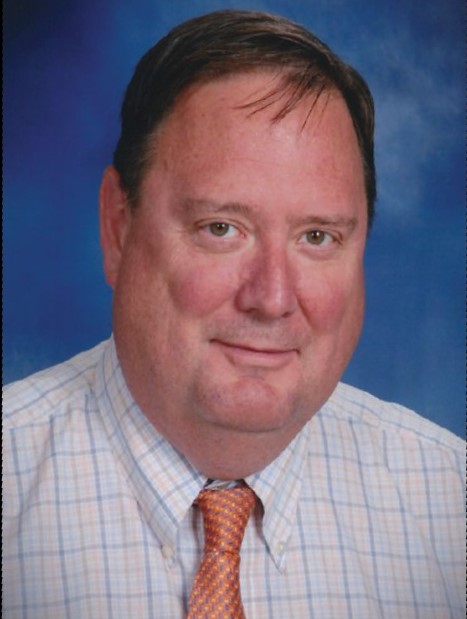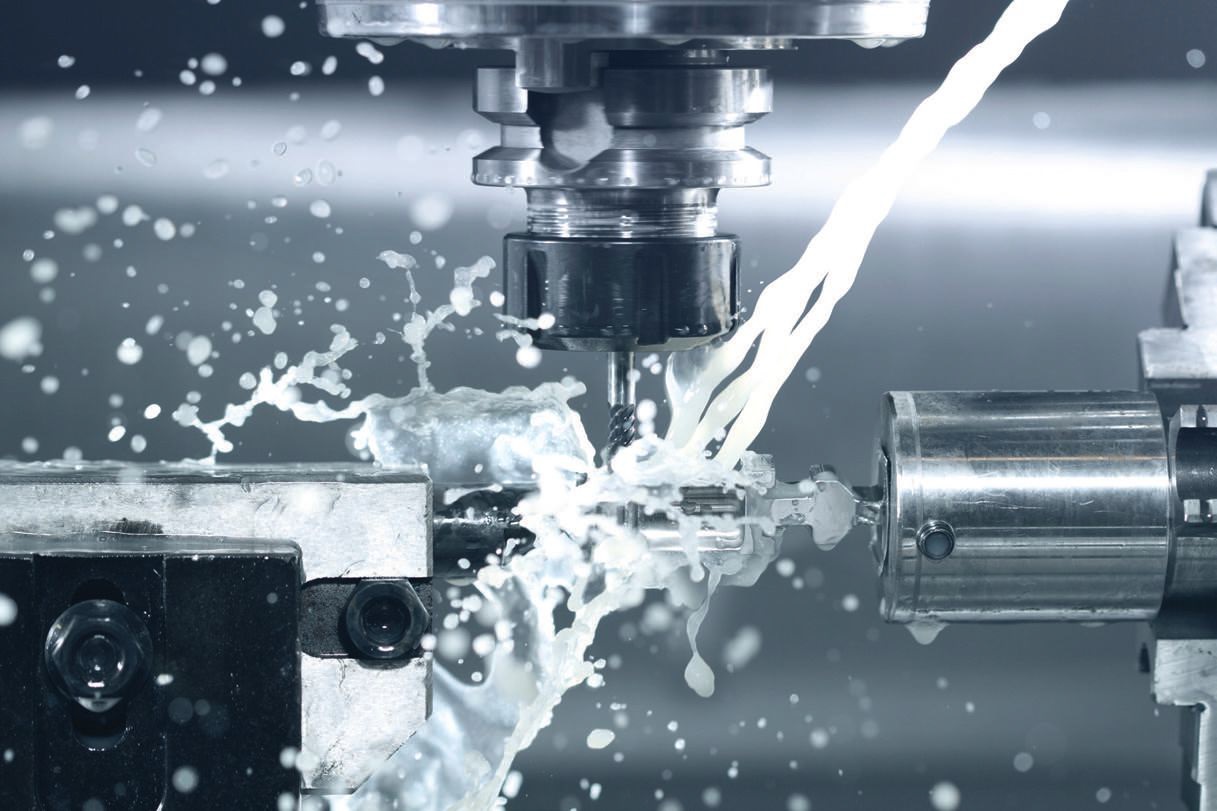20 Minutes With Richard Butler
Karl M. Phipps, Managing Editor | TLT 20 Minutes October 2012
This Certified Metalworking Fluids Specialist explains the role of MWFs and spectroscopic instrumentation used in the condition monitoring of fluids.
RICHARD BUTLER - The Quick File
Work Experience
Rick Butler has more than 30 years in the industrial lubricants business. Currently he serves as technical manager for metalworking at Chemtool Inc., in Rockton, Ill. (outside of Chicago). He has worked primarily as a formulator of metalworking coolants and stamping lubricants throughout most of his career. His technical interests are rust preventive coatings, cleaners, gear oils, liquid gaskets, die-cast release agents, quenchants and biobased lubricants.
Previously, Rick worked as an analytical chemist for Fuchs Lubricants with an interest in developing analytical methods for infrared microscopy and chemometrics, X-ray fl uorescence and UV-visible spectroscopy, GC/MS and HPLC chromatography. In addition, he held positions as a facility manager for the North American Chemical Co. in Dallas and Newridge Chemical in Bedford Park, Ill., and Pillsbury Chemical and Oil. He’s the father of two college students and enjoys racing sailboats and mountain bicycling.
Education
Bachelor’s of Science, Chemistry – Michigan State University, East Lansing, Mich., 1981
Industry Affiliations and Professional Achievements
•
STLE member (since 1983)
•
STLE Certified Metalworking Fluids Specialist
•
Chair, STLE Metalworking Fluids Technical Committee (2011-2012)
•
Vice Chair, STLE Condition Monitoring Technical Committee (2011-2012)
•
STLE Metalworking Fluids Education Committee
•
Member, STLE Chicago and Central Illinois Local Sections (has also presented several technical presentations at the local and national levels)
•
Member, Chicago Chromatography Discussion Group, 1995-2005
•
President, Society of Applied Spectroscopy (Chicago Section), 2000-2003
•
Member, MCM-MSDG (Madison-Chicago-Milwaukee – Mass Spectrometry Discussion Group), 1996-2001
 Richard Butler
Richard Butler
TLT: Why did you choose to work in the lubricants industry?
Butler: After graduating from Michigan State, I was interested in working in the automotive industry in the Detroit area. I wanted to combine my education in chemistry with practical experiences in the engineering field. My first job at Pillsbury Chemical and Oil got me hooked. Soon after starting, I was involved in major troubleshooting calls at both transmission and automobile stamping plants. I soon realized that this could be an interesting career that has an endless variety of challenges without becoming routine and boring.
TLT: What mentors have had the most influence on your career?
Butler: My mentor at Pillsbury was Harris Vahle, who never shrunk away from problems and was interested in teaching young people about the lubricants business. Harris always encouraged me to keep at it and never give up until you solved the problem. Most industrial lubrication problems really boil down to communication difficulties between engineers and chemists.
Other mentors I encountered were Barry Twomey and Steve Hogenboom of D.A. Stuart, who both demonstrated professional lubricant development techniques and shortcuts. However, Chemtool’s longtime owner Jim Athans and his family’s work ethic is a model that I wish to emulate, as well as Chris Sdregas, Chemtool’s vice president of technology, who has great people skills in handling difficult business problems.
TLT: You have expertise in condition monitoring techniques for lubricants. How has condition monitoring of fluids evolved during your career?
Butler: Thirty years ago most analysis was done with wet chemical methods or non-computerized analog instrumentation. The wet chemistry methods were very slow and not all that accurate. Searching infrared spectra qualitatively was done by hand by comparing a strip chart graph against a large Sattler infrared library book. The whole process was so slow it was not really practical. Infrared quantization was difficult and rarely performed.
Starting in the late 1980s, digital instruments became common and practical due to the low cost of personal computers. The advantages of using digital computers for qualitative- library spectral searching and also for facilitating chemometrics quantization of mixtures are now practical and relatively easy.
Gas chromatography with mass spectral detection (GCMS) is now common in MWF analysis. However, liquid chromatography is still under utilized in MWF lubricant analysis.
Most new condition monitoring sensors and programs are geared toward oil analyses of motor oils, gear oils and hydraulic oils. These advances do not apply to or help MWFs. For water-based MWFs, the only specific advances have been in microbiological growth detection. In addition, there have been improvements in the speed and selectivity of microbiological growth monitoring instruments.
 Liquid chromatography with mass spectral detection (LCMS) is the dominant analytical technique for pharmaceutical research.
Liquid chromatography with mass spectral detection (LCMS) is the dominant analytical technique for pharmaceutical research.
www.canstockphoto.com
TLT: can more sophisticated chromatography and spectroscopy techniques play a role? Are they affordable?
Butler: Liquid chromatography with mass spectral detection (LCMS) is the dominant analytical technique for pharmaceutical research. Lubricant analysis problems are just as difficult as pharmacokinetics problems. LCMS could be a great tool for better understanding the dynamics of degradation within an in-use MWF.
Small handheld slab waveguide infrared spectrometers are affordable and seem to be real instruments. Palm-sized dispersive Raman spectrophotometers are low cost and utilize fiber optic probes. These Raman spectrophotometers can supply almost as much molecular qualitative information as bench-top infrared instruments. Raman has an advantage over infrared as water does not interfere with Raman vibrations.
Soon portable GCMS will be practical. X-ray florescence for elemental analysis is moving away from low resolution and imprecise proportional counter detectors to high resolution, energy dispersive solid-state detection (EDXRF). I would like to see wider use of very high resolution, wavelength dispersive X-ray instruments (WDXRF) as even high resolution EDXRF can be improved.
TLT: What are the challenges of designing modern MWFs?
Butler: Thirty years ago soluble oils were only expected to last two to four months. Now MWF coolants are expected to last a year or longer. Soluble oils do not have good sump life and have lost market share. Users of metalworking coolants do not expect to have to add emulsifiers, defoamers, pH boosters or biocides to help maintain MWF.
Synthetics at 10% or above can last up to two to four years as long as the concentration is maintained. However, synthetic MWFs cannot machine all materials in operations. Straight oils are being replaced by water-based MWFs. Semisynthetics are the dominate form of MWF now. Improving the emulsion life of semisynthetics is the main challenge. Novel forms of emulsification hold promise.
TLT: What emerging synthetic lubricant technologies could have a future impact in the industry?
Butler: The only true new synthetic lubrication basestock in the last 30 years is the recent introduction of oil-soluble polyalkylene glycols (OSP). OSPs do not form varnish and hold great promise for automotive gear oils. They have high-heat capacities and thermal transfer abilities to keep truck and race car transmissions and differentials from requiring oil coolers.
TLT: Are there recent industry innovations that will provide a game-changing performance for lubricant formulators?
Butler: The new OSPs have a very low aniline point, meaning high solvency. Like naphthenic oils, they can hold a lot of polar emulsifiers or additives. Blends of OSP and mineral oils have superior varnish resistance compared to other synthetics and Group III basestocks.
For turbine oils, OSPs can solve the varnish problem. The same applies to heat transfer fluids and other high temperature lubricants. They also seem to have inherent lubrication abilities, allowing for reduced additives.
TLT: How important are synthetic MWFs in the industry and are there particular types of synthetics you would prefer?
Butler: Due to long sump life potential, I wish more machining could be done with conventional water-soluble polyalkylene glycols (PAG)-based MWF. Emulsions of OSPs have the potential for long sump life just like water-based PAG. These emulsions are also good as cleaners and have decent rust protection.
TLT: What are the greatest gaps in the product offerings from synthetic PAO, ester and PAG base fluid suppliers and how are they being addressed?
Butler: They are all very expensive. PAO are superior at cold temperature applications but offer no inherent lubricant advantages. Esters are superior lubricants and have high flash points but suffer from poor oxidation resistance. OSP do offer inherent lubrication and non-varnish, high-heat capabilities to help justify the cost increase over conventional mineral oils.
TLT: What do you enjoy the most about STLE?
Butler: I was previously a member of the Chicago Chromatography Discussion Group (CCDG) and the Madison-Chicago-Milwaukee Mass Spectroscopy Discussion Group (MCM-MSDG). Both societies failed and dissolved about eight years ago. Unlike STLE, the local sections of these two societies did not have a hierarchy of volunteer subcommittee activity. Also, there was no formal mechanism to move up within the local section subcommittees to become the local or national section chairperson.
The volunteer opportunities to serve in a progression of roles at both the local and national level is STLE’s greatest organizational strength. The expectation that STLE volunteers can move up within the organization’s hierarchy is unique. In addition, STLE covers a diversity of topics, and the society’s technical sections are unrivaled. Finally, STLE’s educational and professional certification programs keep getting better each year.
 Thirty years ago, soluble oils were only expected to last two to four months. Now MWF coolants are expected to last one year or longer.
Thirty years ago, soluble oils were only expected to last two to four months. Now MWF coolants are expected to last one year or longer.
www.canstockphoto.com
TLT: What advice would you offer to students interested in pursuing a career in lubricant development or tribology research?
Butler: The problems are interesting, varied and endless. Real improvements are still to be gained in lubricant life and performance. Moving away from mineral oil to synthetic basestocks should be the challenge of the next generation.
The ability to speak like an engineer and think like a chemist is invaluable. Taking analytical work courses in advanced mathematics (linear algebra) and partial differential equations will help students solve future complex chemometrics techniques. Meanwhile, learning how to write programs can also be very valuable. Personally, I wish I had taken courses in both microbiology and biochemistry.